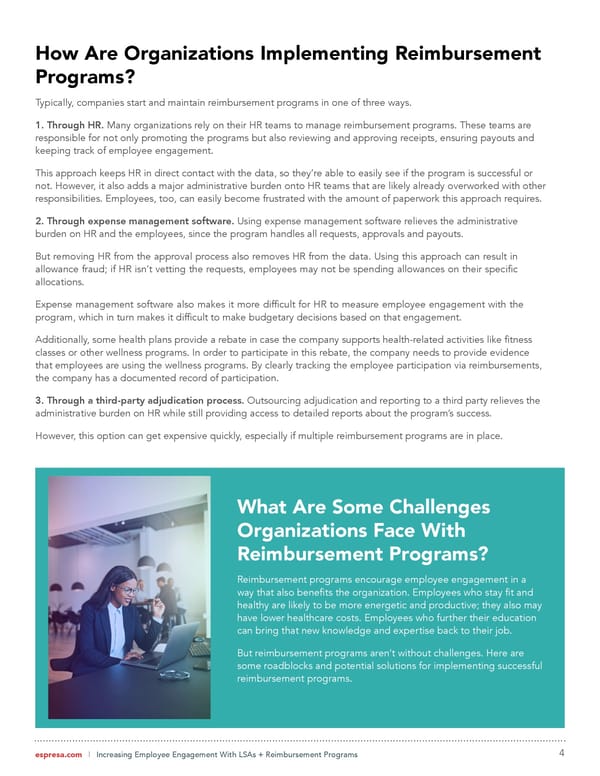How Are Organizations Implementing Reimbursement Programs? Typically, companies start and maintain reimbursement programs in one of three ways. 1. Through HR. Many organizations rely on their HR teams to manage reimbursement programs. These teams are responsible for not only promoting the programs but also reviewing and approving receipts, ensuring payouts and keeping track of employee engagement. This approach keeps HR in direct contact with the data, so they’re able to easily see if the program is successful or not. However, it also adds a major administrative burden onto HR teams that are likely already overworked with other responsibilities. Employees, too, can easily become frustrated with the amount of paperwork this approach requires. 2. Through expense management software. Using expense management software relieves the administrative burden on HR and the employees, since the program handles all requests, approvals and payouts. But removing HR from the approval process also removes HR from the data. Using this approach can result in allowance fraud; if HR isn’t vetting the requests, employees may not be spending allowances on their specific allocations. Expense management software also makes it more difficult for HR to measure employee engagement with the program, which in turn makes it difficult to make budgetary decisions based on that engagement. Additionally, some health plans provide a rebate in case the company supports health-related activities like fitness classes or other wellness programs. In order to participate in this rebate, the company needs to provide evidence that employees are using the wellness programs. By clearly tracking the employee participation via reimbursements, the company has a documented record of participation. 3. Through a third-party adjudication process. Outsourcing adjudication and reporting to a third party relieves the administrative burden on HR while still providing access to detailed reports about the program’s success. However, this option can get expensive quickly, especially if multiple reimbursement programs are in place. What Are Some Challenges Organizations Face With Reimbursement Programs? Reimbursement programs encourage employee engagement in a way that also bene昀椀ts the organization. Employees who stay 昀椀t and healthy are likely to be more energetic and productive; they also may have lower healthcare costs. Employees who further their education can bring that new knowledge and expertise back to their job. But reimbursement programs aren’t without challenges. Here are some roadblocks and potential solutions for implementing successful reimbursement programs. espresa.com | Increasing Employee Engagement With LSAs + Reimbursement Programs 4
 Espresa Increasing Engagement With Reimbursements Page 3 Page 5
Espresa Increasing Engagement With Reimbursements Page 3 Page 5